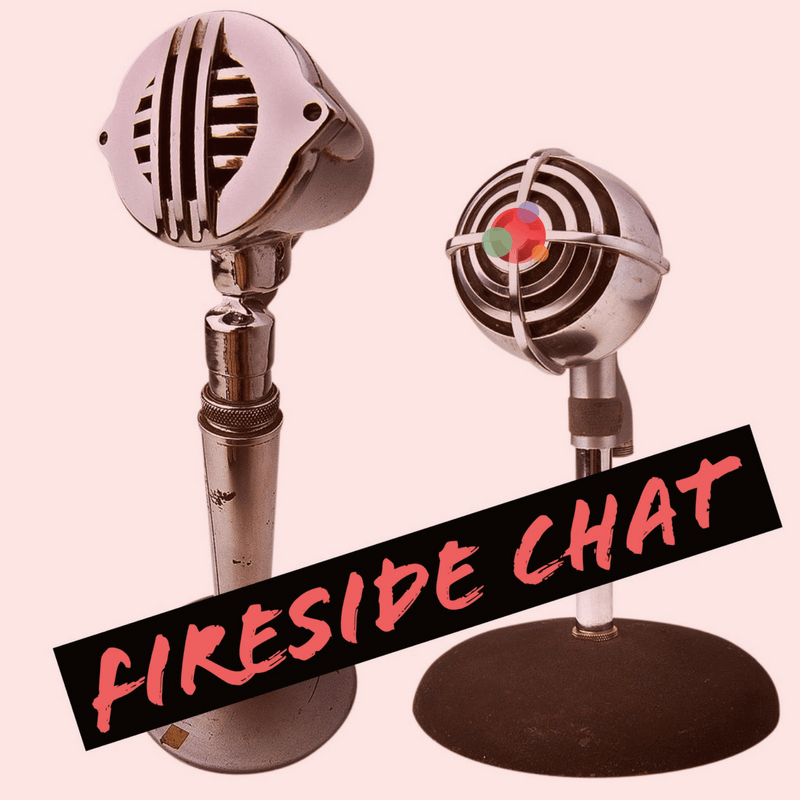 Six years ago, after Marketing in the Round was published, I gave my very first keynote speech.
Six years ago, after Marketing in the Round was published, I gave my very first keynote speech.
It was to a friendly audience, which was great, but it made me even more nervous. All of my friends were there! What if I screwed it up royally?
I managed to pull it off (either that or my friends were extraordinarily gracious) and I gathered some feedback for improvement the next time.
A close friend gave some of the best feedback I’ve ever received. She said, “When you’re nervous, you play with your hair.”
On stage, I thought? I do?
Sure, enough. I didn’t even realize I did it, but it was a pretty bad nervous habit.
Today when I speak, I make sure my hair is styled in a way that I can’t play with it. I can’t trust myself!
Because, unfortunately, I still get nervous when I speak. I have to create stopgaps to prevent myself from playing with my hair (and other nervous tics).
Body Language and Sales
That’s why I was fascinated to hear Jim McCormick and Maryann Karinch on Roger Dooley’s podcast, talking about body language and its effect on sales.
The co-authors of Body Language Sales Secrets: How to Read Prospects and Decode Subconscious Signals to Get Results and Close the Deal, Jim and Maryann provide insight into why our body language might help—or hurt—us.
You know, things such as playing with your hair or picking your cuticles (yep, another one of mine).
As I listened to their conversation with Roger, I thought about how communicators could benefit for several reasons.
In many cases, we’re in charge of new business development so we have to not only go to sales meetings, but sell during those meetings.
We also tend to do a lot of speaking—we might keynote conferences, speak on panels, present to boards, clients, or executives, or sell our ideas internally.
We also are relationship builders by nature and what Jim and Maryann speak about is rapport building and how important that is in sales.
Based on those things, we invited them to join me for the Fireside Chat.
They are here to talk about:
- Your risk and comfort zones
- How to read what you’re receiving—and be conscious of what you’re giving
- The glitchy behavior you demonstrate when you’re stressed
- The types of things you should do in a meeting, particularly with the decision maker
The conversation is fascinating and a bit off the path of our normal guests.
You’ll really enjoy it—and you’ll likely find your “playing with your hair” body language tics as you listen.
The Fireside Chat: Talking Body Language with the Experts
We started the conversation with this outline of questions, but you’ll see we also went a bit off the reservoir.
- As communicators we focus a ton on WHAT we say, but not as much on HOW we say it. How much of effective communication is determined through body language?
- What are some of the most common body language mistakes professionals make?
- We focus a lot on “connecting” with our audiences, how can we do this from a body language perspective?
- What things do we do that create separation from the person or people we’re speaking with?
- Another crucial aspect of communication is listening. How can we become better “listeners” to body language?
- Where does situational awareness come into play here? How can we use body language to determine decision makers or major influencers?
- A common anxiety-ridden situation communicators find themselves in are new business meetings. How can they use body language to get better results?
- Speed round.
- What’s next for Jim and Maryann?
My Favorite Parts of the Conversation
Here are some of the highlights, from our conversation.
- How body movement—your tone of voice and even what you’re wearing—can affect your ability to sell. That’s why it’s so important to know your tics—and why I always style my hair in a way that makes it impossible for me to play with it when I’m nervous.
- How this virtual world has changed how we interact with other humans—and what body language we should be aware of when we are on video chat.
- Why you must evaluate a sales meeting ahead of time and how to calculate how you’ll interact with each attendee.
- The conversation around changing your mindset from “sales” to “rapport building.”
- The differences between positive and negative body language.
- How to match the level of energy with other people in the room.
- How to change your glitchy nervous habits—and we all have them.
I also really loved the speed round because the answers were so different from what we normally hear among our marketing friends.
We also learn that Maryann started her career in PR, both for Apple and other high-tech companies. She is our people!
(Also, our editors asked me to let you know Jim’s audio wasn’t cooperating. I didn’t notice it during the recording, but they tried to fix it best they could.)
Without Further Ado…The Fireside Chat
Enjoy the conversation…and let us know what you think!
(If you can’t view the video below, click here and you’ll be magically transported to YouTube to watch it.)
Next Month’s Fireside Chat
Our May guest will be Melissa Agnes, the brand, stinking new author of Crisis Ready.
She and I have decided to do something a little bit different. We are going to armchair quarterback some of the most recent crises.
Think of it as Sunday morning football—we’ll look at the wins, the losses, and what we expect to happen for each organization in the coming months.
There may even be some color commentary!
Stay tuned for that on May 25.